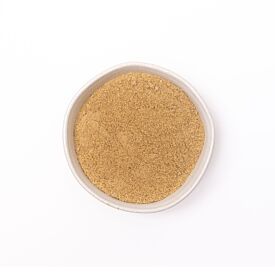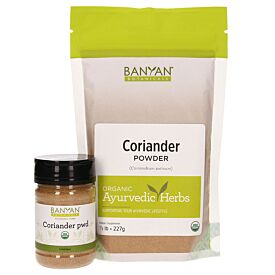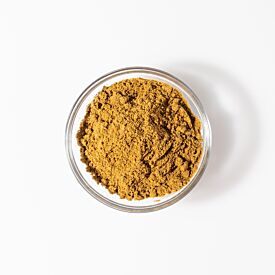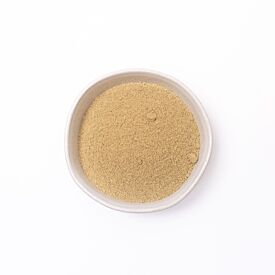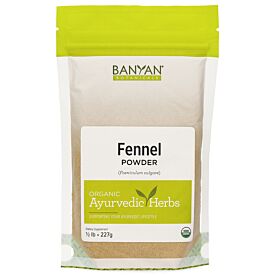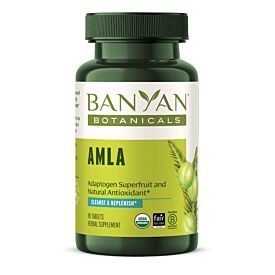Cleansing Excess Pitta from the Body
According to Ayurveda, health is our natural, balanced state. Ayurveda defines the many substances and influences, both internal and external, that are beneficial and detrimental to our bodies.
Avoiding every substance or situation that is unhealthy is nearly impossible in today's world. However, the wisdom of Ayurveda can boost your understanding of health and support choices that lead to a balanced state of being. Ayurveda offers knowledge to increase awareness of the factors that may cause imbalance in our bodies and our lives. It also provides ways to create and maintain balance by regulating the systems of the body through diet, lifestyle, herbs, yoga, and meditation.
The Ayurvedic scope of health is holistic, encompassing a balanced body, mind, and spirit. For instance, the thoughts and emotions we experience in our relationships can be equally as influential on our state of health as the foods and other substances that we ingest.
It can be as challenging for a pitta individual to digest a hurtful criticism from a spouse, for example, as it is to digest a plate of greasy French fries. When pitta flares, the body may express this imbalance as an itchy, red rash, excess heat, impatience, or even an emotional explosion of anger.
What Is Pitta Dosha?
Of the three doshas in Ayurveda, pitta is the hottest, oiliest, and sharpest. If you're feeling overheated in any way, there could be an excess of the pitta dosha occurring within your body. If you're wondering whether your pitta is out of balance, please take the dosha quiz, which can help you determine your Ayurvedic body type, which dosha is acting up, and what steps you can take for optimal health.
According to Ayurvedic wisdom, routine detoxification can be invaluable for maintaining good health during seasonal changes. Summer is the season where pitta dosha accumulates in the body, particularly if an individual's constitution is pitta-predominant. The increase in excess heat can become reactive, settle in the tissues, and manifest as an imbalance if it is not properly eliminated.
Ayurveda offers solutions to help the body dispose of natural toxins, or ama, before they have a chance to take hold and cause disorder. Ama is a heavy, sticky, undigested residue that can weaken digestion and disturb proper tissue formation. Ama is formed when we eat foods that are difficult to digest or of poor quality, or when we are unable to process experiences or emotions.
Toxins can also come in the form of bacteria, viruses, drugs, heavy metals, pesticides, chemicals, and other environmental pollutants.
When there is an excess of pitta dosha and a health imbalance arises, ama often accompanies it.
Signs of Excess Pitta
Excess pitta can manifest in the body as:
- An uncomfortable feeling of heat in the body
- Acid reflux, gastric or peptic ulcers, heartburn
- Acute inflammation in body or joints
- Indigestion, constipation, or diarrhea
- Discomfort or nausea upon missing meals
- Anger, irritability, frustration
- Bad breath and body odor
- Excessive sweating
- Impatience, criticism, judgment, intolerance
- Extreme perfectionist tendencies
A person's complexion may also be an indication of whether or not there is a toxic overload in the body. Excess pitta in the blood can result in breakouts on the skin such as hives, acne, and red rashes. Cleansing the body, particularly the liver and blood, through diet and herbs can result in clear, radiant skin and more balanced pitta dosha.
Causes of Excess Pitta
There are many causes that contribute to an excessive amount of pitta in the body, including:
- Eating a pitta-provoking diet
- Exposure to chemicals
- Too much sun exposure, sunburn
- Emotional stress
As with any imbalance, Ayurvedic treatment involves first removing the cause and then applying the therapeutic remedies necessary to bring the body back into balance. Ayurveda offers simple and gentle dietary, herbal, and lifestyle guidelines to assist the body in releasing built up toxins and clearing excess pitta dosha from the system. The remedies to balance pitta are both cooling and reducing.
Diet to Reduce Pitta
The stomach and small intestine are two common sites for pitta dosha to accumulate. Ayurveda uses a pitta-soothing diet as the first line of action when addressing excess pitta. When it comes to reducing pitta, choose pitta-balancing foods that will be cooling and cleansing to the body.
Simple dietary guidelines to help your body detox:
- Choose sweet, juicy fruits like melons, plums, and peaches.
- Include vegetables that are bitter and astringent such as collards, kale, and asparagus.
- Add digestive spices to your food such as cumin, coriander, fennel, and turmeric.
- Limit hot, spicy, fermented, salty, oily, fried foods.
- Reduce or eliminate alcohol and caffeine. These substances are both sharp and hot, provoking to pitta dosha.
- Drink plenty of cool, fresh water. Staying well hydrated helps the body to flush away toxins.
Herbs to Reduce Pitta
Ayurvedic herbs can provide a world of comfort to pitta, internally and externally. We recommend choosing one to three of these pitta-balancing herbs and products to start with and slowly incorporating more support over time, if needed.
- Pitta Balancing Bundle. When looking for herbal support to pacify excess pitta, the Pitta Balancing Bundle is an excellent place to start. It contains herbal products that help reduce and balance pitta, such as Healthy Pitta, Pitta Digest, Triphala, and Pitta Massage Oil.
- Amalaki. Also known as “amla,” amalaki is recommended to cleanse excess pitta from the GI tract. This gentle detoxifying herb supports a healthy stomach lining and proper function of digestive acids. One of the three ingredients in triphala, it also promotes regular bowel function and removes natural toxins from the body. Amalaki is considered a source of natural antioxidants and is deeply nourishing to the body tissues.
- Neem powder or tablets. Neem is one of the most powerful herbs for reducing pitta. Traditionally, it is used to cleanse the blood, eliminate toxins from the liver, and maintain clear, healthy skin. It is an extremely bitter herb that is indicated in cases of excess pitta and whenever a cooling, reducing therapy is needed.
- Healthy Skin and Blood Cleanse. Because neem is such a strong herb, it is rarely taken by itself. Neem can be found as a primary ingredient in these two formulas, both of which support healthy skin, reduce pitta, and generally do not aggravate vata or kapha.
- Liver Formula. An herbal tablet that contains bhumyamalaki and guduchi, along with many other beneficial herbs to support proper functioning of the liver, Liver Formula helps to reduce excess pitta and support detoxification.
- Neem Oil, Neem Soap, and Soothing Skin Balm. These products can be used as topical treatments to help quell excess fiery pitta externally, supporting calm, clear skin.
Lifestyle Tips to Reduce Pitta
Establishing a pitta-pacifying dinacharya, or daily routine, is a simple and effective way to bring sustained balance to pitta dosha. A pitta balancing routine, including going to bed before 10 p.m., eating meals at regular times, making lunch the biggest meal of the day, and practicing daily abhyanga (self-massage) with an Ayurvedic oil like Pitta Massage Oil or Coconut Oil are fantastic ways to balance the body.
Here are some additional tips for keeping pitta dosha under control:
- Go for a swim or rest your feet in a pure, natural water source. If a spring, lake, or ocean is not accessible, have a soak in a pool or take a cool bath in your tub.
- Take breaks, meditate, chant, or sing to quell the reactive emotions of high stress situations or stressful job environments.
- Seek out pleasantly sweet company.
- Wear cooling colored clothing, such as blue or purple. White can also be beneficial for pitta.
- Try not to exercise too intensely, or during the hotter parts of the day. Instead, plan gentle exercises in the evening or early in the morning.
- Avoid exposure to chemicals or fumes.
- Limit sunbathing and try moon-bathing. Relaxing in the silvery moonlight helps to balance pitta.
- Practice sheetali pranayama, also known as Cooling Breath. This pranayama (breathing practice) is one of the most simple ways to balance pitta wherever you are.
Yoga Poses to Reduce Pitta
Check your competitive nature and bring qualities of softness and compassion to your yoga practice. Hot yoga can aggravate this dosha, as can overexerting yourself during poses.
Try practicing some pitta pacifying yoga in a in a tranquil environment with plenty of airflow so as not to overheat. Use 80 percent of your usual energy, go easy on yourself, and leave any self-critical or judgmental feelings at the door.
For beginners, adding forward bends, such as Standing Forward Bend (Uttanasana) to your practice will bring more cooling energy into your body.
For seasoned yogis, Moon Salutations are the ideal series of postures for balancing pitta dosha. A spinal twist helps to massage the liver and spleen, both organs of pitta dosha that work to purify and protect healthy blood.
Meditation Practices to Reduce Pitta
Meditating is a wonderful way to channel pitta's naturally sharp focus. The practice of sitting quietly and bringing your attention inward is profoundly beneficial in relieving stress and relinquishing control. Two options for a beginning practice are Empty Bowl Meditation and So Hum Meditation.
When pitta runs high, an individual is prone to excessive criticism, judgment, anger, and envy. Meditation can increase your awareness and ability to monitor these negative emotions. Regular practice can aid in the transformation and release of unwanted emotions, bringing clarity and offering insight into your mental processes.
Meditation can also help to relieve mental and emotional toxicity brought about through harmful relationships and/or stressful jobs. Practicing meditation can be useful in cultivating patience and compassion. As you bring these quiet qualities to your own mind, peace will echo all over the world.
“Until mankind can extend the circle of his compassion to include all living things, he will never, himself, know peace.”





